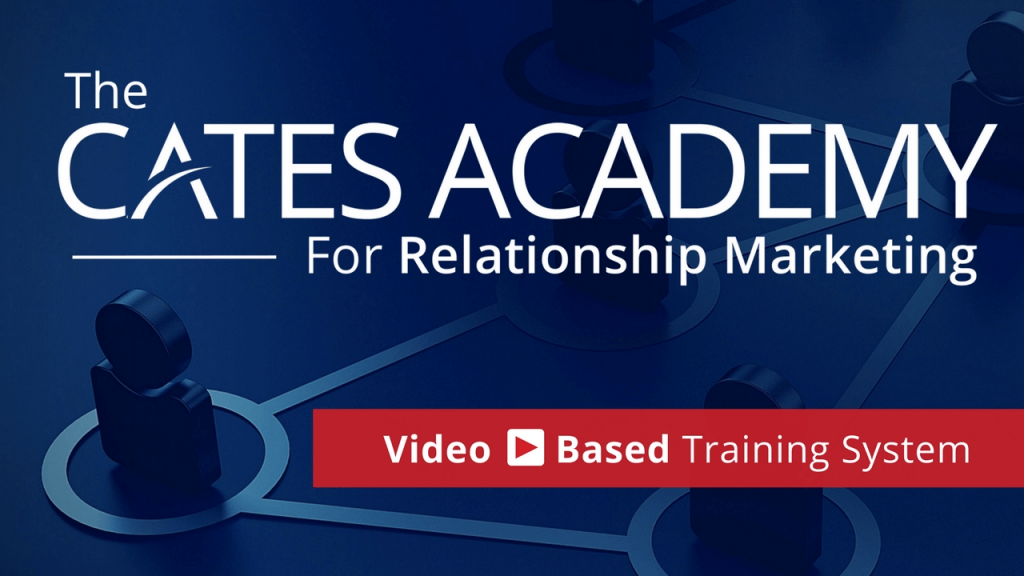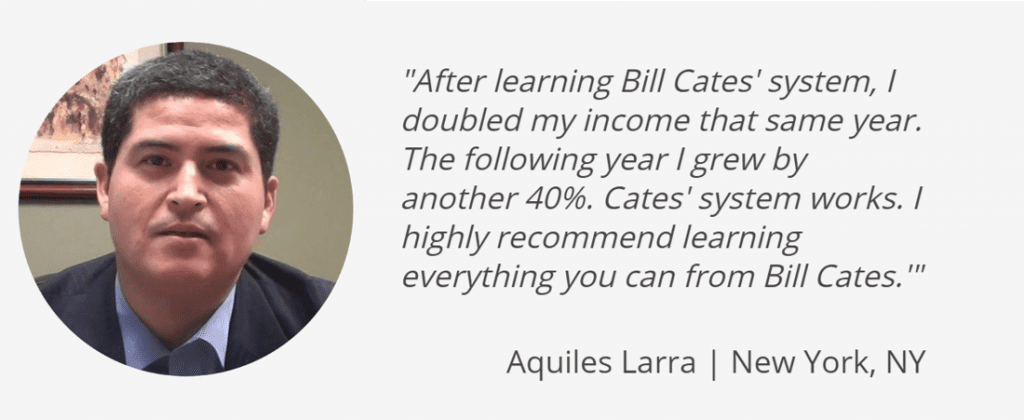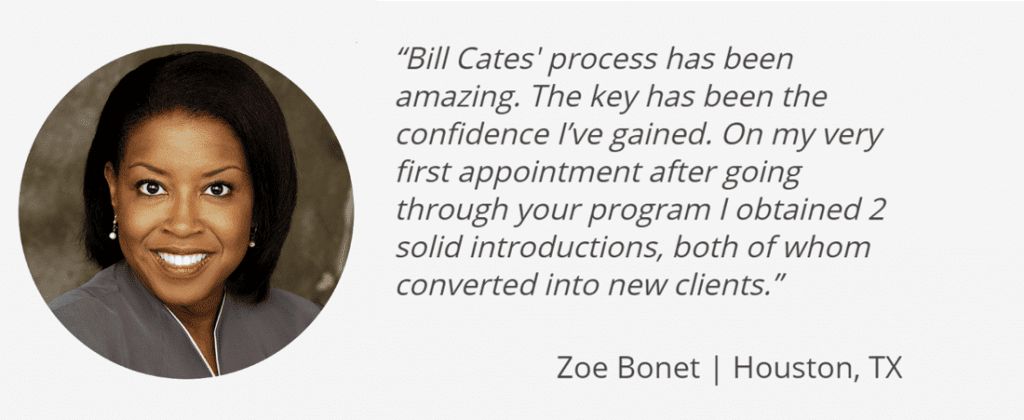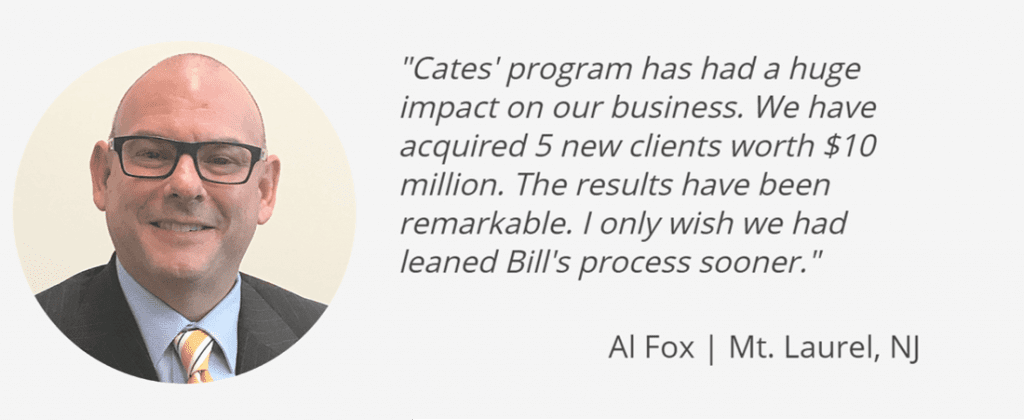How to Get Introduced in a Virtual World

Referrals are worthless unless what? Unless you get introduced.
Last week I talked about how to ask for referrals in a virtual environment.
In this blog, I want to talk about getting connected – getting introduced.
What’s the best way to get connected while working virtually? Through email. I have three different types of emails that I want to run by you, to show you what it would look like and how you can get your client or center of influence to introduce you with an email.
Prefer to watch than read? Check out the video below.
The Classic Email
In this first example your referral source (your client or your center of influence) sends the email to the prospect including you either in the Send To line or regular CC line.
The Subject Line
George, there’s someone I’d like you to meet
The Message
George, I’ve been doing some financial work with Laura Smith. She has really opened my eyes to a few things I needed to put in place to protect my family and to secure a better retirement.
I cc’d her on this email, so expect her to reach out to you sometime soon. I think you should take her call. It will be worth a few minutes of your time, if not more.
What’s good about this is that you know it’s been sent and they’ve given a little bit of an endorsement, “I think you should take her call.”
The Email Handshake
This second example I believe, is the most effective in most situations. I call this the email handshake, because we are literally creating a digital handshake.
As above, your referral source is still sending the message, with your email address preferably in the Send To field – giving you equal status as the prospect.
The Subject Line
George Jones meet Laura Smith.
The Message
George, I want you to meet Laura Smith. We’ve been doing some financial work together and she’s really opened my eyes to a few things I needed to put in place to protect my family and secure a better retirement.
Laura, meet George Jones. George and I were roommates in college. He’s a great guy until you get him out on the golf course.
George, I highly recommend you speak with Laura. I’m sure it will be time well invested.
What’s good about this is the prospect can see that the referral source, probably their friend or colleague or family member, has put some personal attention into the message. And there’s a little endorsement there, “I recommend you take her call.”
Create a Template for Your Clients
Create a template or an example of how you’d like this to be implemented. Then you can send it to your referral source to give them a sense of what you’re looking for.
Coach them to change the wording a little bit – to make it perfect for this situation and their relationship with the prospect. If there’s something that they said to you that you really liked, then try to get them to include that. If you send an example they will certainly get a sense of how to do this.
This is, by far, the best way to get introduced through an email.
The Client Bump
In this third option, you are sending the email. Why? Because maybe you don’t trust your prospect to get it done. Maybe they’ve been putting it off and this is a fallback position. In this case, you’re not dependent on others. You’re making it happen.
What makes this work is that you gain agreement from the referral source, the client or the center of influence, to add to the conversation when they see the email go through. You start the process, but you’re still going to get some help from that referral source.
The Subject Line
With the subject line, you want to make sure you use the referral source’s name. The purpose of the subject line of an email is to get people to open the email. They don’t know you, but they know their friend or their family member or colleague.
George, Bob Jones suggested I contact you. OR George, Bob Jones asked me to contact you.
The Message
George, my name is Laura Smith. I’ve been doing some financial work for Bob and he asked me to reach out to you.
I specialize in financial planning for fast paced business owners and entrepreneurs like you and Bob, who want to focus on what you do best, running your business and making money.
Based on Bob’s urging, I’d like to schedule a brief call, 10 to 15 minutes, to see if it makes sense to continue the conversation. May I send over some time slots for you to consider?
You’re hoping that when Bob sees this email go through from you to George, he will then add to the conversation, “Yeah, George, you really should talk to Laura. She’s done some great work for me. Really opened my eyes to a few things. You won’t regret it. It’ll be time well invested.”
Hopefully that will happen, but if it doesn’t, if your referral source drops the ball, you still have made contact with a prospect. You’ve got the implied endorsement, “Bob Jones suggested I contact you.”
Be Assumptive for the Introduction
If you have someone willing to introduce you to someone else, you want to be assumptive for the introduction.
“You know my guess is George would prefer to hear from you before he hears from me. Let’s talk about what that would look like – to make sure it feels comfortable for everybody and at least piques his interest in hearing from me.”
I hope you found these two video series helpful. Remember the first one was How to Ask for Referrals in the Virtual World, and then how do you get introduced in the virtual world.
If have any questions, comments, thoughts around this, please shoot them off to me. I would love to have a conversation with you.
This is Bill Cates leaving you with a question. Who would you like to be introduced to today? Thanks for watching.
Virtual Referral Training is Here
Special Referral Stimulus Offer SAVE $200
You can learn and implement our proven process while working from home or not seeing clients and prospects face to face.
Get the details and join us: www.CatesAcademy200.com







